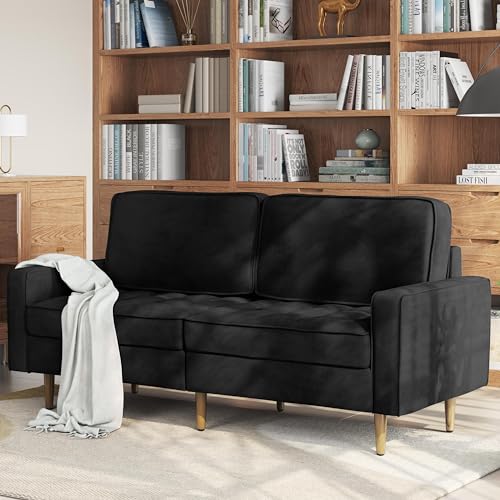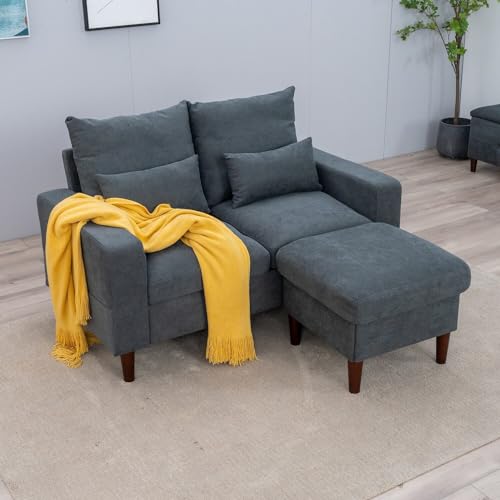Guide To 2 Seater Leather And Fabric Sofa: The Intermediate Guide For …
페이지 정보
작성자 Brian 댓글 0 Hit 5Hit 작성일 25-01-15 09:45본문
 Choosing Between a 2 seater fabric lounge large 2 seater fabric sofa leather and fabric sofa 2 seater fabric, cool training,
Choosing Between a 2 seater fabric lounge large 2 seater fabric sofa leather and fabric sofa 2 seater fabric, cool training,If you're looking for a new sofa it can be tricky to choose between leather or fabric. This is particularly true if you have little experience with furniture.
If you have kids or reside in apartments the leather option could be a good fit for you. It's easy to wipe down and it looks fantastic in a lot of homes.
Comfort
A sofa is the focal feature of many people's living areas and is a major purchase. You want a sofa can be sat on for hours and that looks good and will stand the test of time. Making a decision between leather and fabric sofa 2 seater can be confusing, but it is important to consider your needs, lifestyle and budget before making a choice.
Leather is a high-end, luxurious material that oozes class and luxury in any home. It is tough and stain-resistant, as well as insensitive to pets and children, and will last for a long time if given proper maintenance. However, it is more expensive initially and will require regular conditioning to prevent cracking or peeling.
Fabric sofas are available in a vast selection of styles, colors and fabrics. They can be cheaper than leather ones. They are also softer and more inviting, and can be "broken into" right from the beginning. They are susceptible to dust mites and pet hairs, and may need more frequent cleaning. There are now hypoallergenic fabrics as well as new technology available.
The life-span of a sofa made of fabric will depend on the quality of the material, but most fabrics will last up to 15 years if they are properly maintained. Regular vacuuming and deep-cleaning will aid in keeping the fabric clean and free of stains and odours. They can also flatten and sag as time passes, just as leather. Additionally, many fabrics are treated with chemicals to make them stain-resistant and flame retardant. These couches release volatile organic chemicals that may cause allergies and affect indoor air quality.
Durability
When purchasing sofas, we typically select fabrics that are extremely durable because this can be crucial when you have pets or children. You don't want to invest a lot upfront and be left with buyer's remorse after the first spill or crowbarred claws. You don't want a cheap item that can't withstand everyday use.
Leather is also extremely tough, with incredible tear strength. It also lasts up to 4 times longer than fabric, and is naturally resistant to cracking, fade and flaking over time. It can also be conditioned to replenish its natural oils and look as good as new.
Fabrics are a less expensive alternative and are available in a range of different colors patterns, patterns, and textures to match any interior design. They are also easier to clean than leather and can withstand a fair amount of wear and tear but they do tend to be more susceptible to moisture and suffer from fading over time.
Microfiber is a good choice for durability and is available in a variety of colours, but it's not as durable as genuine leather and may not withstand scratches. It's still a great choice for families because of its resistance to spills and stains. It's also easy to clean using a damp cloth.
Suede is more difficult to clean and repair than leather. It can also lose its shape if not regularly maintained and can feel very rough to the touch. It is also a thin product and therefore may not be as durable as sheepskin and cowhide leather.
Allergens
 Fabrics can have a major impact on allergies. It's important to know how different options perform. Fabrics tends to retain allergens like dust mites and pet dander, which can cause symptoms such as asthma, hay fever rhinitis and eczema. This is because these fabrics provide the perfect environment to allow them to grow.
Fabrics can have a major impact on allergies. It's important to know how different options perform. Fabrics tends to retain allergens like dust mites and pet dander, which can cause symptoms such as asthma, hay fever rhinitis and eczema. This is because these fabrics provide the perfect environment to allow them to grow.The leather, however is not a reservoir of allergens and offers a constant level of comfort, regardless of the season. However, it can be a trigger for dermatitis, particularly in those with contact dermatitis or are sensitive to the chemicals that are used in tanning. To avoid skin reactions, it's essential to use products that are vegetable-tanned and maintain a vigilant routine for your skin.
Sofas made of fabric and leather have a high degree of durability, however the choice of material will determine how long it will last over time. A top-quality fabric will not suffer from fade or sagging and will withstand spills, body oils and daily use. Many modern fabric couches come with stain resistant treatments to make cleaning easier.
Although you may not be able to prevent an allergic reaction from the leather on your sofa, it can help to reduce allergens by having a lint roll near and regularly vacuuming your living area. This will help in reducing the amount of dirt, pet hair and dust mites that accumulate on your sofa. If you still suffer from allergies, you can replace your sofa with a hypoallergenic one. For instance, a sofa made of synthetic or vinyl will not trap pet dander or dust mites. It will also allow you to breathe easier.
Scratches
When you are buying a leather sofa, it is important to think about how much wear and tear you can anticipate from it. The finish, color and the quality of the leather are crucial elements in determining how long a couch will last. It is also important to ensure that the couch is durable enough to withstand spillages and other accidents. This can be accomplished by choosing a couch with a solid wood frame and high-density foam cushions.
Leather can be damaged by many different reasons like stretching it, marking territory or in the process of reliving tension. Scratches can be of various severity. They can range from minor surface scratches to severe punctures or cuts. Small scratches can be fixed by applying a leather conditioner to the area affected. This will help restore the balance of moisture and oil in the leather, which will prevent drying out and cracking. The extent of damage will determine the treatment needed.
If you have cats, it is an ideal idea to trim their nails regularly as this can help to prevent scratching on your couch. You can also retrain your cat's scratching habits by providing them with alternatives scratching surfaces such as sisal rope or cardboard. You can also use a pet safe furniture polish which you can apply using an easy, clean cloth.
In addition to cleaning your leather couch regularly, it is also recommended to keep it away from the direct sun and other sources of heat because this could dry out the leather. This can cause it to crack, which is usually difficult to repair and often requires the reupholstery. It is recommended to use a leather conditioner to keep the leather supple.
Smell
A leather couch is known to have a different scent than fabric. It's because it's more porous and can absorb unwanted odors, such as smoke, body odor or food quite easily. The good thing is that odors usually disappear over time, particularly if you use a non-toxic, fragrance free cleaner.
If the smell is overwhelming it could indicate that something is wrong with the foam. This is usually caused by the chemical off-gassing process of polyurethane that is derived from petroleum. If you're worried about this, you should look for couches made of CertiPUR US certified latex foams or natural latex.
Another way to tell if it's faux leather is to look for texture or bumps on the back of the sofa. This is a sign that the leather is bonded and not genuine top grain. It is also possible to conduct an inspection by tilting the couch on its side to see if you can see any visible upholstery backing. If it is see any, it's likely a synthetic material like polyurethane or polyester, which will have a very different scent than genuine leather.
Cleaning your leather sofa on a regular basis will keep it looking and smelling great. This will help keep it looking good and smells great as well as preventing it from becoming stiff or cracked as time passes. Start by vacuuming and dusting the couch, then wiping it down with a dry cloth and baking soda (a great natural method to get rid of smells). This is to be done every two weeks to remove dust and dirt. Apply leather conditioner to preserve the color and texture of your sofa.





